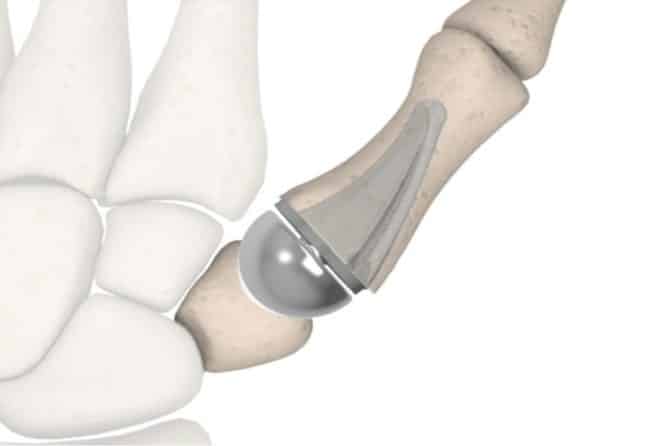
You may have heard a lot about joint replacements lately, and wondered what it meant. Or maybe your doctor has recommended you seek a surgeon who specializes in joint replacement, but the term was new to you, and maybe even a little intimidating. But it shouldn’t be intimidating. Joint replacement is the term used to describe a medical procedure where a joint in the human body is surgically replaced and repaired to alleviate pain and improve function, and when performed by experts, has very good results.
Joint replacement is the most common type of a surgical procedure known as arthroplasty. One of the very first nationwide prevalence studies in the United States revealed that an estimated 7.2 million adults in the country had knee or hip joint implants. Another study found that over 1 million joint replacement surgical procedures are conducted in the United States annually. Over the next few years, this number is estimated to show a rapid increase.
Terminology
Joint replacement is sometimes referred to as total joint replacement, or even just “total joint”. When referring to a specific joint in the body, you might see “total knee replacement” or even just “total knee,” “total shoulder,” or “shoulder replacement.” Since joint replacement is a subset of arthroplasty, you may encounter “total joint arthroplasty,” but all these terms refer to the procedure where an internal prosthetic replaces a joint that is somehow damaged, often from various joint diseases, including osteoarthritis and rheumatoid arthritis.
What Is A Joint Replacement Surgical Procedure?
Joint replacement surgery is a procedure where diseased and damaged areas of a joint are removed. Man-made materials are then used to replace the removed parts. These materials take the place of the original joint in order to restore improved functionality. Joint replacement procedures are now considered safer than before, and today’s patients face fewer risks.
One advantage of joint replacement is that the procedure does not rule out other options later in life. If the implant either fails or the patient is persistently symptomatic, the implant can be easily removed and replaced. Hence, total joint replacement remains a viable alternative in older patients where functional recovery is rapid, and there is a good salvage potential if necessary.
Joint replacement procedures help reduce the amount of pain the patient experiences, and to enhance the patient’s joint mobility. This can assist in reducing the amount of discomfort and disability that a person experiences due to joint-related damage.
Several joints in the body can be replaced today, including:
- Hip joint
- Knee joint
- Finger joints
- Thumb joints
- Elbow joints
- Ankle joints
- Shoulder joints
Who Needs Joint Replacement?
There are different reasons why a specialist may advise a patient to undergo joint replacement surgery. One of the most common causes of joint damage is arthritis, but it is not the only culprit. Years of wear-and-tear also damage the joints. Moreover, certain diseases can cause issues with joints, and when injured, important joints in the body can suffer permanent damages.
Activity level and age help determine who is a good patient for joint replacement. Even if fairly active, a patient in their mid-70s is different than a patient in their early 40s. The physician’s decision is sometimes based on the patient’s needs. If a fast recovery is important, and the patient is not doing mountain climbing or other extreme sports for a living, then joint replacement may be the answer. Golfers and others active in sports are often good candidates for joint replacement.
As the population ages and continues to be more active, it has become necessary to provide different options for painful osteoarthritic conditions. Advances in biomaterials have led to greater treatment options for critical joints in the body.
Is Joint Replacement A First-Line Treatment Option?
A specialist will not advise a patient to undergo joint replacement if they do not think the procedure is necessary or the best fit for the patient’s lifestyle. To determine whether a patient is a good candidate for joint replacement surgery, a thorough inspection of the patient is first needed, along with X-rays in order to examine the joint tissue.
In many cases, other forms of treatment are first provided. This may include physical therapy, the use of pharmaceutical drugs, and providing the patient with walking aids. The patient may also be advised to participate in a physical activity program, even if it is a simple exercise like walking. Sometimes other arthroscopic procedures are advised prior to the joint replacement.
When these recommended techniques fail to yield a reduction in pain and an improvement in mobility, joint replacement can be introduced as a treatment option.
Advantages of Joint Replacement?
- Ease of recovery
- Faster recovery
- No immobilization
- Minimal amount of post-op pain
- Better option for the right patient
Joint replacement surgery is an effective option for patients who suffer from pain and disability, caused by injury or arthritis, among other conditions. These surgical procedures are considered much safer today than they were a few decades ago, and are now frequently performed in an ambulatory surgery center. The Surgery Center at Doral is a leader in Miami-Dade in joint replacement surgery, utilizing minimally invasive techniques where possible. If your physician is authorized at the Surgery Center at Doral, they can speak with him or her about having your procedure done there.
References
https://www.ncbi.nlm.nih.gov/pmc/articles/PMC5485224/
About the Doral Orthopedic Center
The Doral Orthopedic Center is a center of excellence, assembled to supply an exceptionally high concentration of expertise and related resources in orthopedic medicine. DOC physicians deliver associated care in a comprehensive, interdisciplinary fashion to afford the best patient outcomes possible.
Delivering enhanced healthcare experiences, the patient is emphasized above all other elements of operation.
Services on site at 3560 NW 82nd Ave in Doral, Florida, include diagnosis and treatment by an esteemed team of South Florida’s leading orthopedic surgeons, an ambulatory surgery center, an urgent care center, physical therapy, MRI, digital xray, fluoroscopy, PRP and stem cell treatments. www.DoralDOC.com
Leave a reply



It’s good to know that activity level and age can be determining factors in whether you’re a good candidate for joint replacement or not. My brother has knee problems, and he wants to be more active again. I’ll share this information with him so that he can look into his options for getting joint replacement surgery in the future.
ReplyMy grandma can’t walk correctly. I like how you explain that during a joint replacement surgery the areas of a joint are removed and replaced with man-made material. Thank you for the information. I’ll recommend my grandma to consider getting this procedure so she can walk better.
ReplyThank you for explaining about the different types of joint replacement surgery. My friend just hurt her hip joint. She’ll need to see an orthopedic doctor to determine if she needs surgery.
ReplyIt’s good that you point out that joint replacement surgery is helpful for people whose joints are damaged by arthritis. I have severe arthritis in my shoulder, so I’m considering having joint replacement surgery. I’m going to look for a good orthopaedic surgery clinic in my area that does joint replacement.
ReplyMy dad has been having a lot of trouble with his joints and he has been having a really hard time managing his pain and he really wants to get rid of it. It could be really useful for him to get a professional surgeon to help him get rid of the pain and help him the most. I’ll be sure to tell him that his joints may be worn down because of how old he is and he should make sure to not suffer permanent damages.
Reply